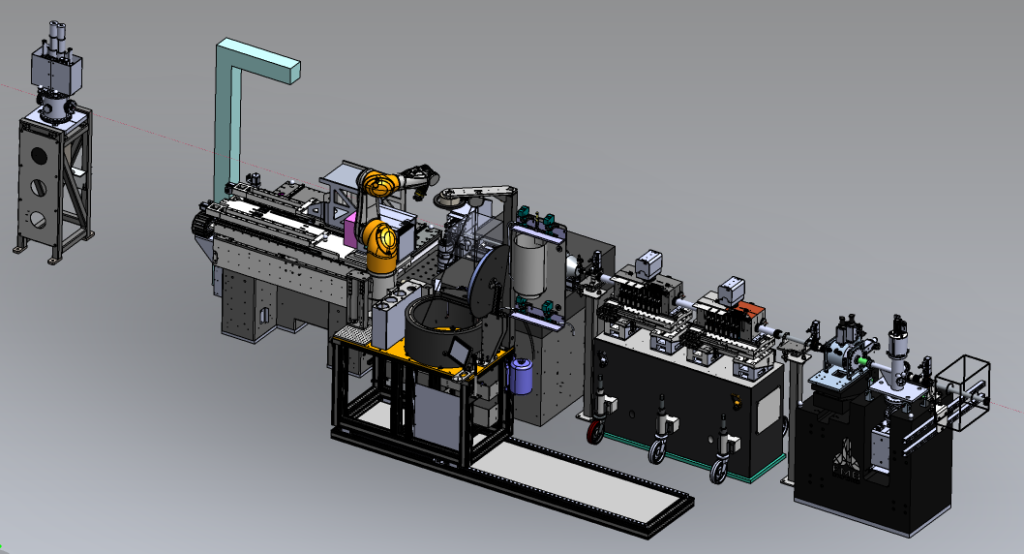
MicroMAX is a macromolecular crystallography beamline with emphasis on serial and time-resolved crystallography that is also designed for high-throughput rotational crystallography. It is defined by its flexibility in terms of size and flux of the X-ray beam, multitude of sample delivery methods, photon-counting and integrating area detectors, UV/vis spectroscopy lab and time-resolved functionality with a microsecond X-ray chopper, nanosecond laser and timing electronics. MicroMAX also has an advanced experiment control setup, fast feedback data analysis and automatic data analysis pipelines.
MicroMAX will provide a 4 x 2 μm2 focus (with focusing mirrors in 2026) and at present with X-ray lenses only the focused beam is 15 x 5 μm2 with the possibility to shape it to a 6 μm round beam. The X-ray beam size can easily be increased up to a 50 μm diameter beam, and also larger. In monochromatic mode, MicroMAX can deliver an X-ray beam with > 1013 X-ray photons per second at the sample position. When using multilayer optics, MicroMAX can provide a polychromatic X-ray beam (ΔE/E ~ 0.4% or 1 %) delivering > 1014 X-ray photons per second.
By combining the unique beam properties with a flexible design of the experimental station, the MicroMAX beamline offers a first-class platform for probing protein structure with time-resolved experiments. In terms of sample delivery, MicroMAX supports not only rotational data collection, but also various serial crystallography schemes including fixed-target and injector-based techniques such as high viscous extruder (HVE) injector and different capillary based devices. MicroMAX is designed to easily accept new developments in technology for sample delivery and manipulation.
MicroMAX also serves as a bridge between synchrotron and XFEL radiation sources and the flexible setup and advanced equipment also makes it attractive for other types of experiments.
The experiment setup has a beam conditioning unit (with a microsecond chopper), a sample table (supporting the MD3-UP diffractometer), a cryogenic open flow device, an ISARA sample changer, a nanosecond laser, a detector stage housing two detectors that can be easily exchanged and equipment to support bespoke sample delivery methods and light triggering setups.
The diffractometer is used for rotational crystallography but also for fixed-target serial crystallography. Thanks to inhouse 3D-printing it can be easily adapted to support different injector-based sample delivery systems.
The sample changer can store up to 464 SPINE sample holders and automatically mount and unmount samples to the MD3-UP diffractometer.
The nanoseconds laser system (Ekspla NT-230) can deliver short laser pulse of 3 ns with up to 100 Hz repetition rate and the wavelength is tunable over a broad spectral range (210 – 2600 nm).
The detector stage has two area detectors, an Eiger2 X CdTe 9M photon-counting detector and a Jungfrau 9M integrating detector (not available from November 2025 until sometime in 2026).
In addition, MicroMAX is equipped with a UV/vis spectroscopy setup, which is available for offline UV/vis measurements in the wavelength range 300 – 1000nm.